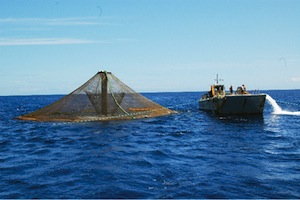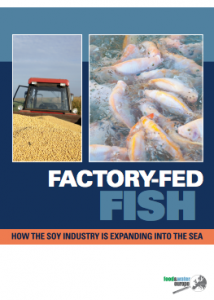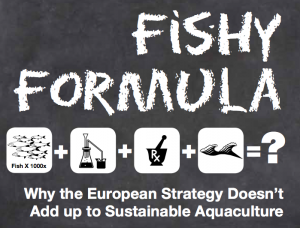The soy industry’s involvement in aquaculture is a tale of how far-reaching the influence of a large,powerful, well-organized agribusiness can be. Although soy is an unexpected and unnatural food for fish to eat, the research and outreach funded by the soy industry has propelled it to the forefront of alternative feed research in the aquaculture industry. Because of the widespread concern about fish farming’s reliance on small, wild fish for feed, the industry has been able to position soybeans as an answer to aquaculture’s sustainability problems. Unfortunately, however, feeding soy to fish is far from sustainable. By supporting factory fish farming, the soy industry could not only help to expand an industry that degrades marine environments, threatens wild fish populations and damages coastal communities, it could also extend its own negative impacts.
Blog Categories: aquaculture
 Offshore aquaculture is factory fish farming of the sea, growing fish in huge, often over-crowded cages out in ocean waters. It can be problematic for both the environment and the economy. The waste – fecal matter, uneaten food, and any chemicals or drugs used in the operation – flows directly into the ocean, and the result could be long-term damage to the seafloor. Despite its negative impacts, the following groups push for, or would profit from, factory fish farming in the United States and Europe.
Offshore aquaculture is factory fish farming of the sea, growing fish in huge, often over-crowded cages out in ocean waters. It can be problematic for both the environment and the economy. The waste – fecal matter, uneaten food, and any chemicals or drugs used in the operation – flows directly into the ocean, and the result could be long-term damage to the seafloor. Despite its negative impacts, the following groups push for, or would profit from, factory fish farming in the United States and Europe.
The factory fish farming industry is pushing to expand. As wild fish populations decline and consumers continue to look to seafood as a healthy food option, open water aquaculture –raising fish in captivity – offers what the industry hopes will the public will believe is sustainable and healthy means to meet seafood demand. But behind the industry’s claims lies a darker story marked by corporate exploitation, rampant polution, massive fish escapes, disease outbreaks, and dependence on dangerous chemicals.




